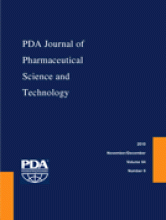Abstract
This study focuses on evaluation of the chitosan methylcellulose interpenetrating polymer network (CS/MC IPN) microspheres intended for mucoadhesive gastroretentive application and the optimization of formulation of cinnarizine-loaded CS/MC IPNs using response surface methodology (RSM). A central composite design (CCD) for two factors at three levels each was employed to systematically evaluate the effect of critical formulation variables, namely ratio of polymers (X1) and glutaraldehyde (X2) on geometric mean diameter (dg), swelling index (SI), percent encapsulation efficiency (EE), percent mucoadhesion at the end of 4 h (MA), and time taken for 50% of drug release (T50). Numerical optimization using the desirability approach was employed to develop an optimized formulation by setting constraints on the dependent and independent variables. The experimental values of dg, SI, EE, MA, and T50 for the optimized formulation were found to be 61.32 ± 1.38 μm, 2.38 ± 0.06, 84.13 ± 1.32%, 73.85 ± 2.78%, and 432.21 ± 26.15 min, respectively, which were in close agreement with those predicted by the mathematical models. The drug release was extended up to 16 h and release rates were fitted to the Power law equation and Higuchi's model to compute the diffusional parameters. The high degree of prognosis (due to low values of error) obtained using RSM corroborates that a two-factor CCD is quite efficient in optimizing drug delivery systems that exhibit nonlinearity in response(s). The results thus indicate that CS/MC IPNs could be employed in the future as potential gastroretentive systems for weakly basic drugs.
LAY ABSTRACT: The present research explores the ability of a network of two biopolymers—chitosan (CS) and methylcellulose (MC)—to prolong the stay of a dosage form in the stomach, in the form of mucoadhesive microspheres, and to sustain the release of cinnarizine from the same. The controlled release formulation was designed using an optimization technique in the form of response surface methodology (RSM) employing a central composite design (CCD). Further, the various batches of formulation were evaluated for their degree of mucoadhesiveness, which is related to the concentration of the polymers used and also on the amount of crosslinking agent required to form the interpenetrating network (IPN) between the two polymers. For the finally optimized formulation, the experimental value of percent mucoadhesion after 4 h was found to be 77.23 ± 2.78% and the time taken to release 50% of drug was 5.60 ± 0.32 h. The values were in close agreement with those predicted by the mathematical models. The low values of error obtained using RSM corroborates that a CCD is quite efficient in optimizing drug delivery systems. The results thus indicate that CS/MC IPNs could be employed in the future as potential gastroretentive systems for weakly basic drugs.
- © PDA, Inc. 2010
PDA members receive access to all articles published in the current year and previous volume year. Institutional subscribers received access to all content. Log in below to receive access to this article if you are either of these.
If you are neither or you are a PDA member trying to access an article outside of your membership license, then you must purchase access to this article (below). If you do not have a username or password for JPST, you will be required to create an account prior to purchasing.
Full issue PDFs are for PDA members only.
Note to pda.org users
The PDA and PDA bookstore websites (www.pda.org and www.pda.org/bookstore) are separate websites from the PDA JPST website. When you first join PDA, your initial UserID and Password are sent to HighWirePress to create your PDA JPST account. Subsequent UserrID and Password changes required at the PDA websites will not pass on to PDA JPST and vice versa. If you forget your PDA JPST UserID and/or Password, you can request help to retrieve UserID and reset Password below.






